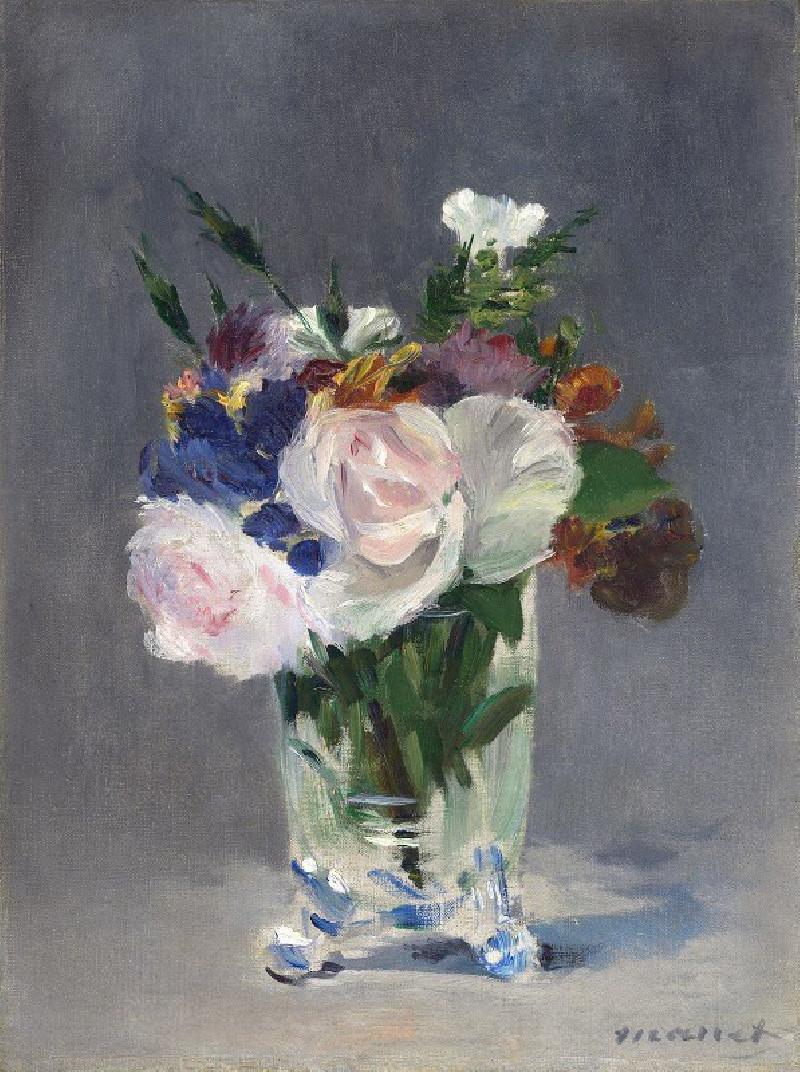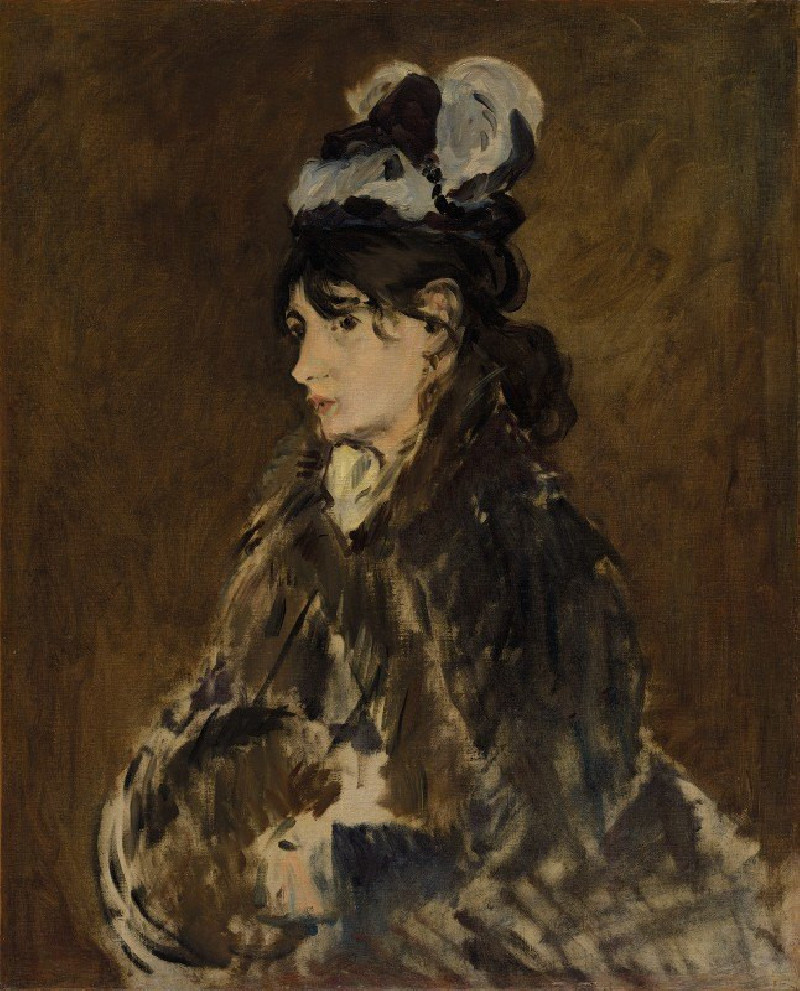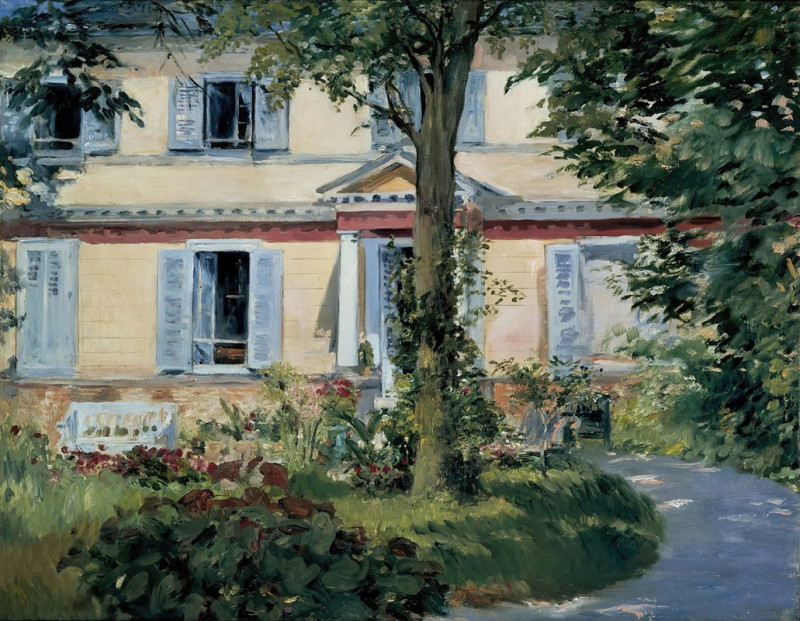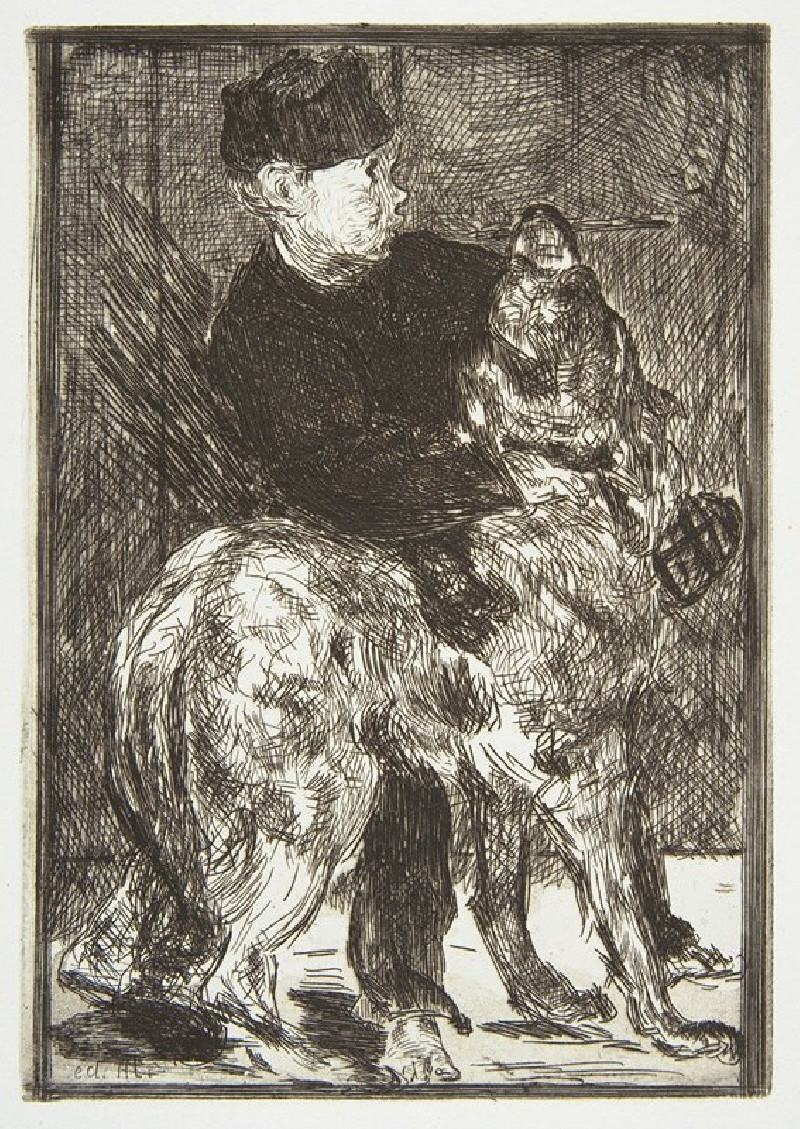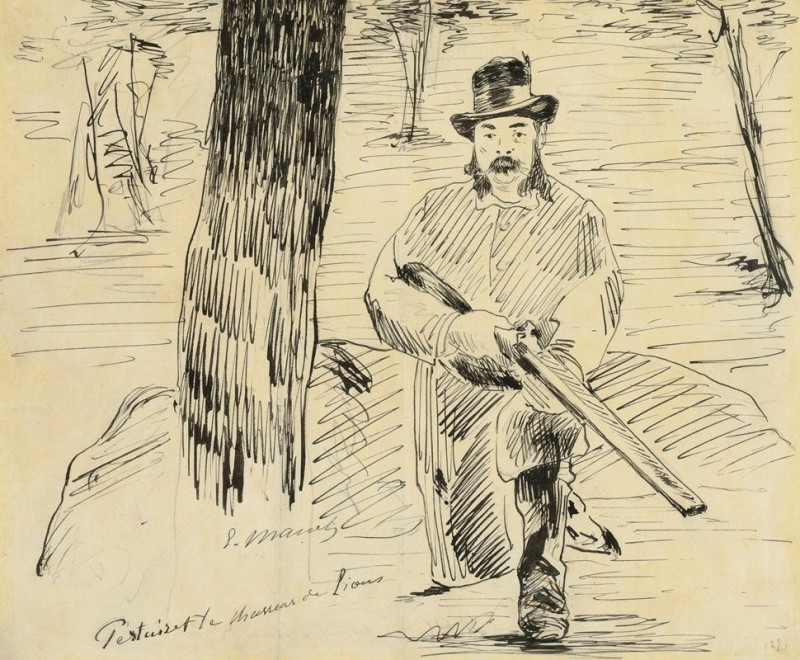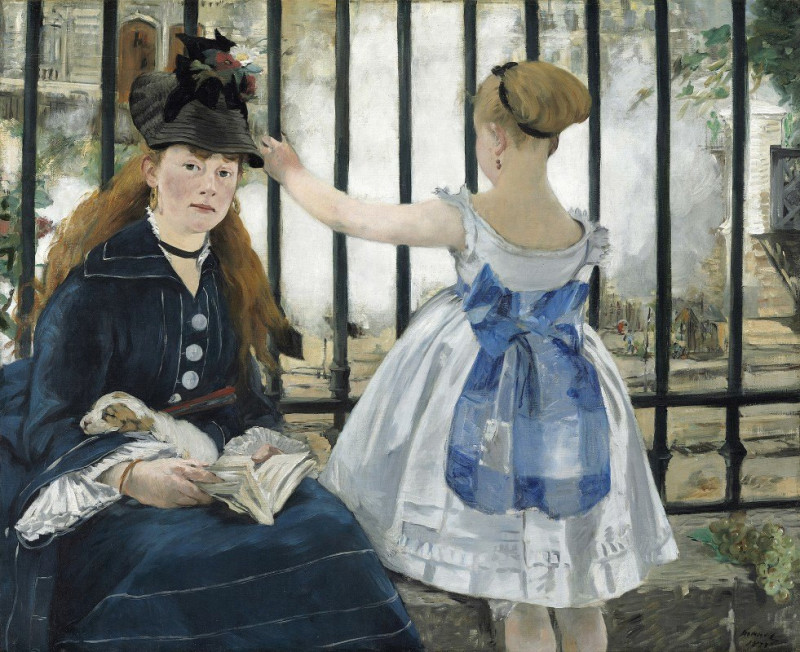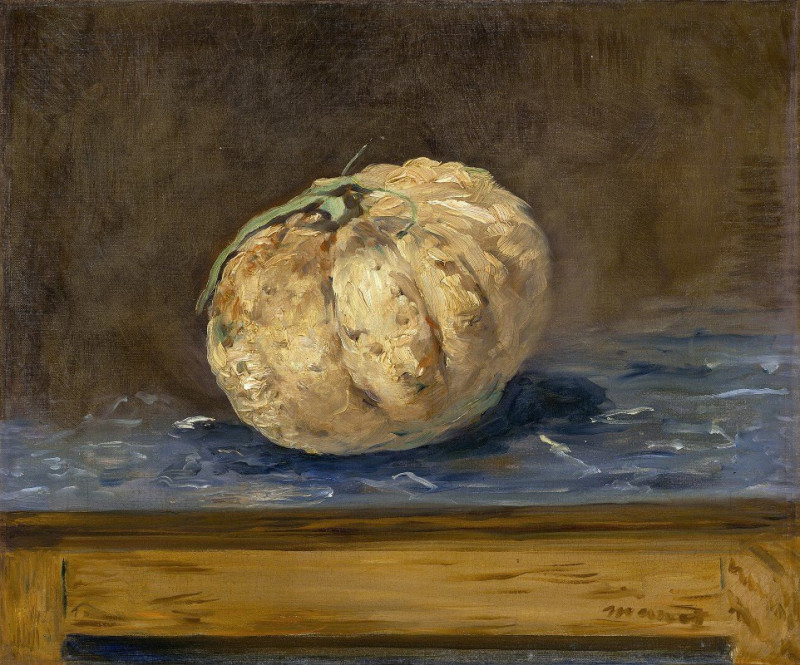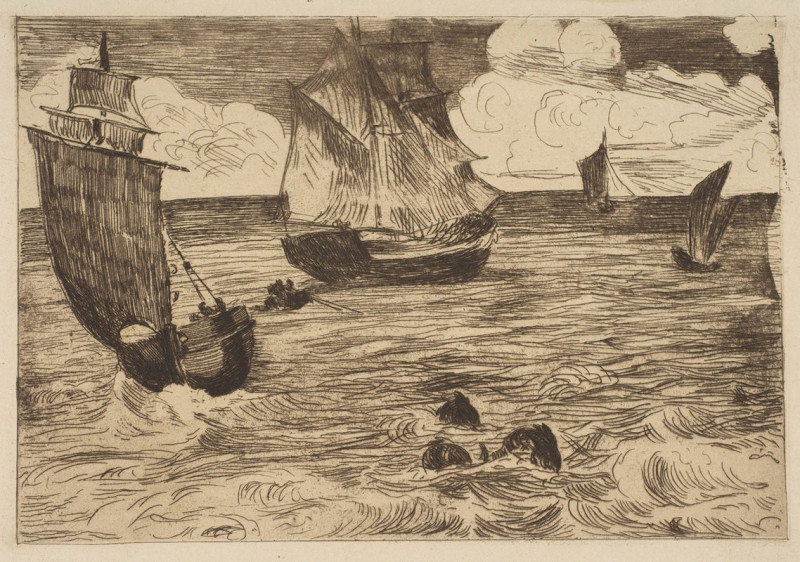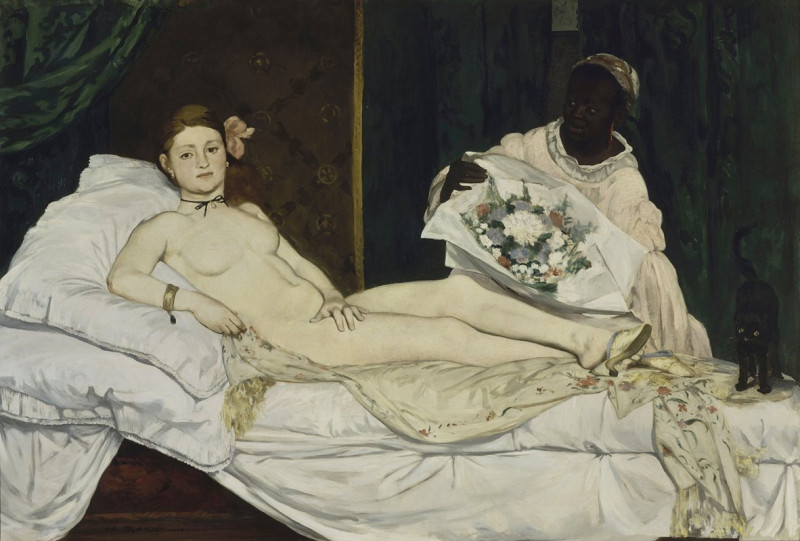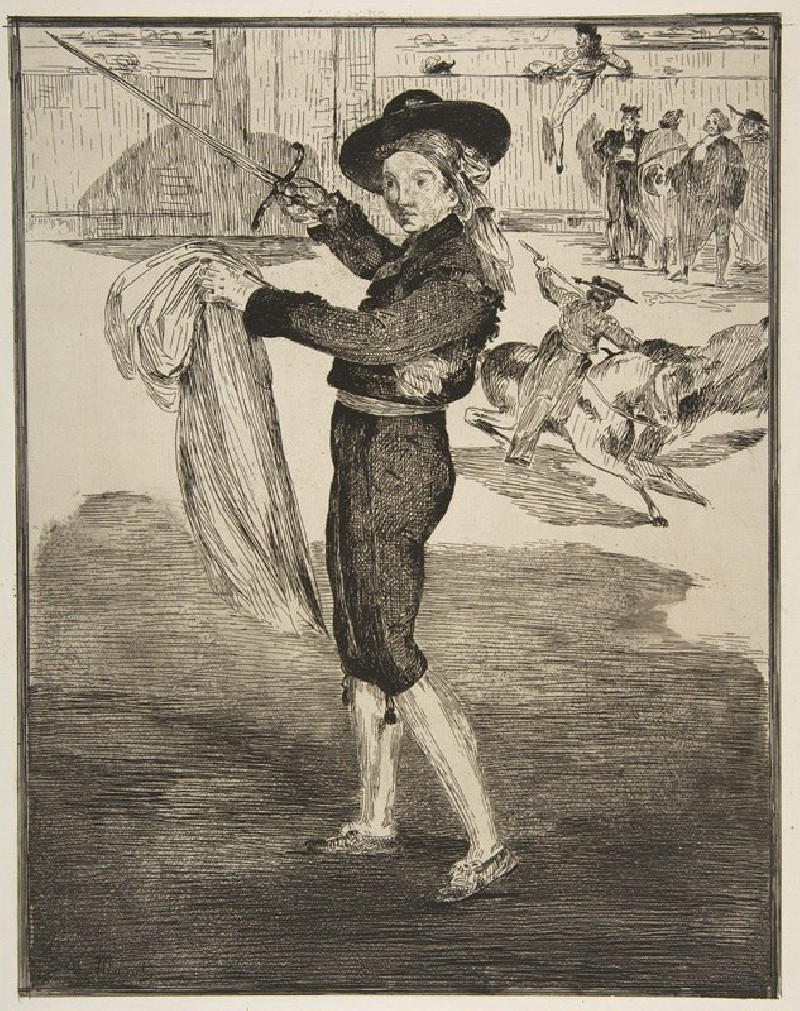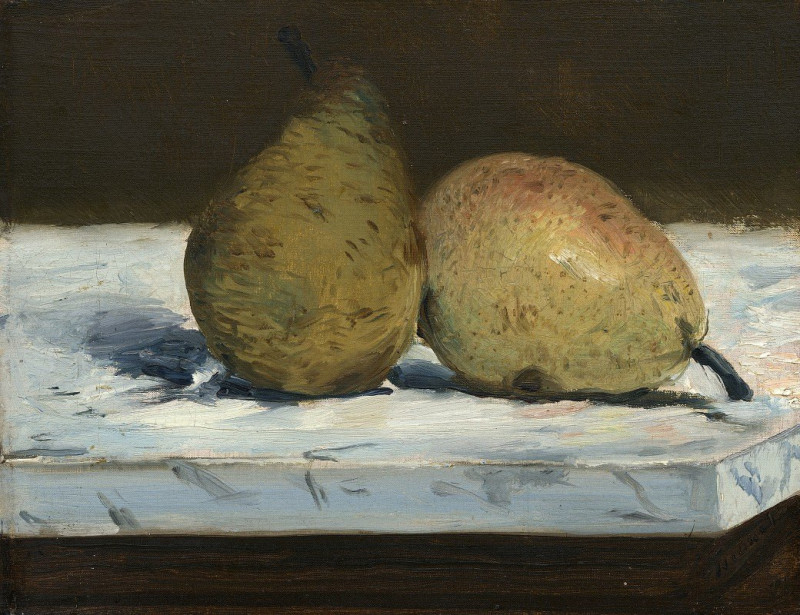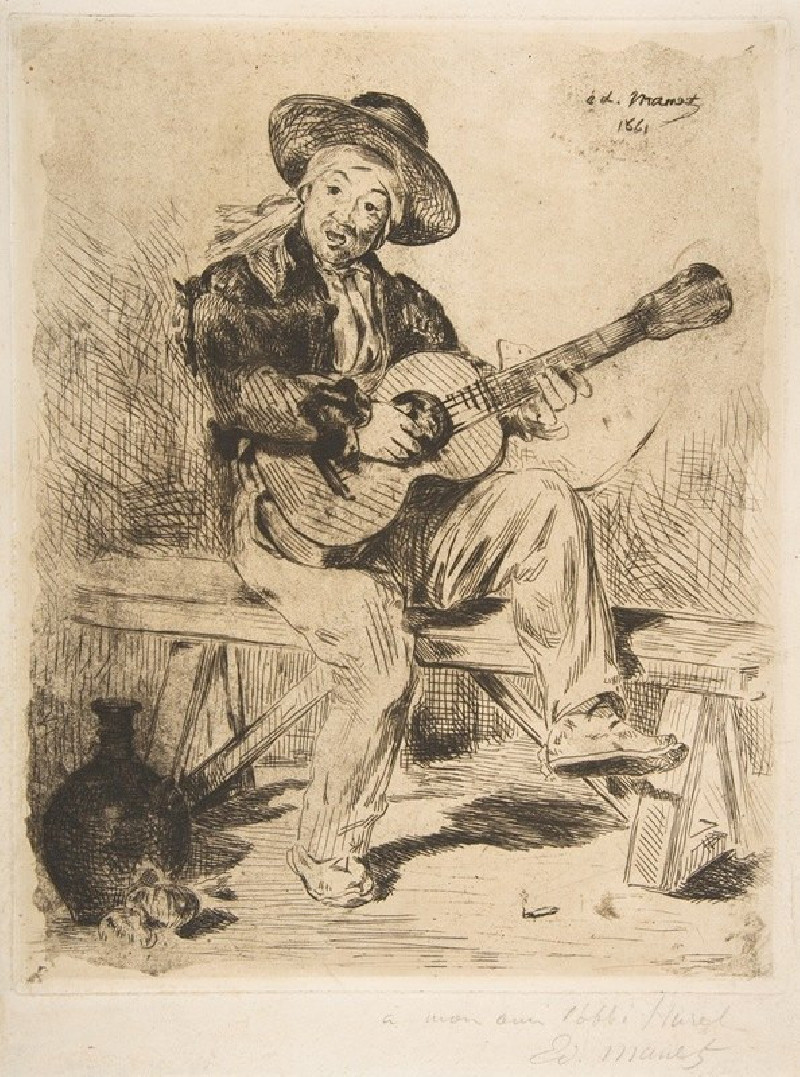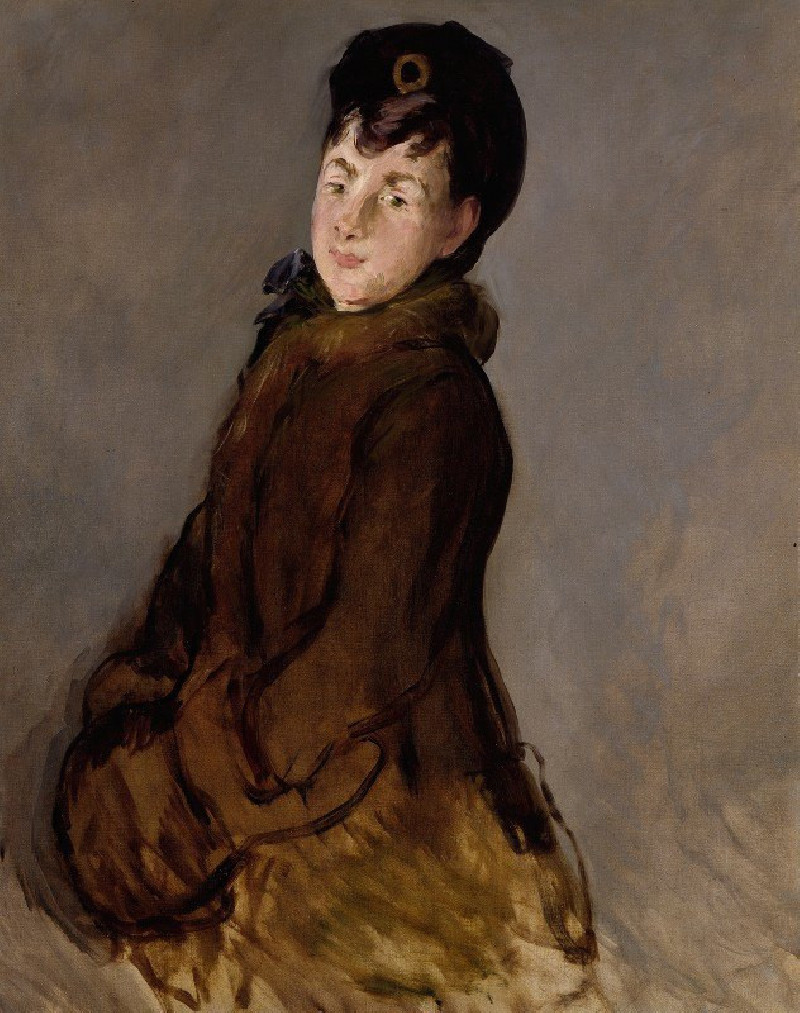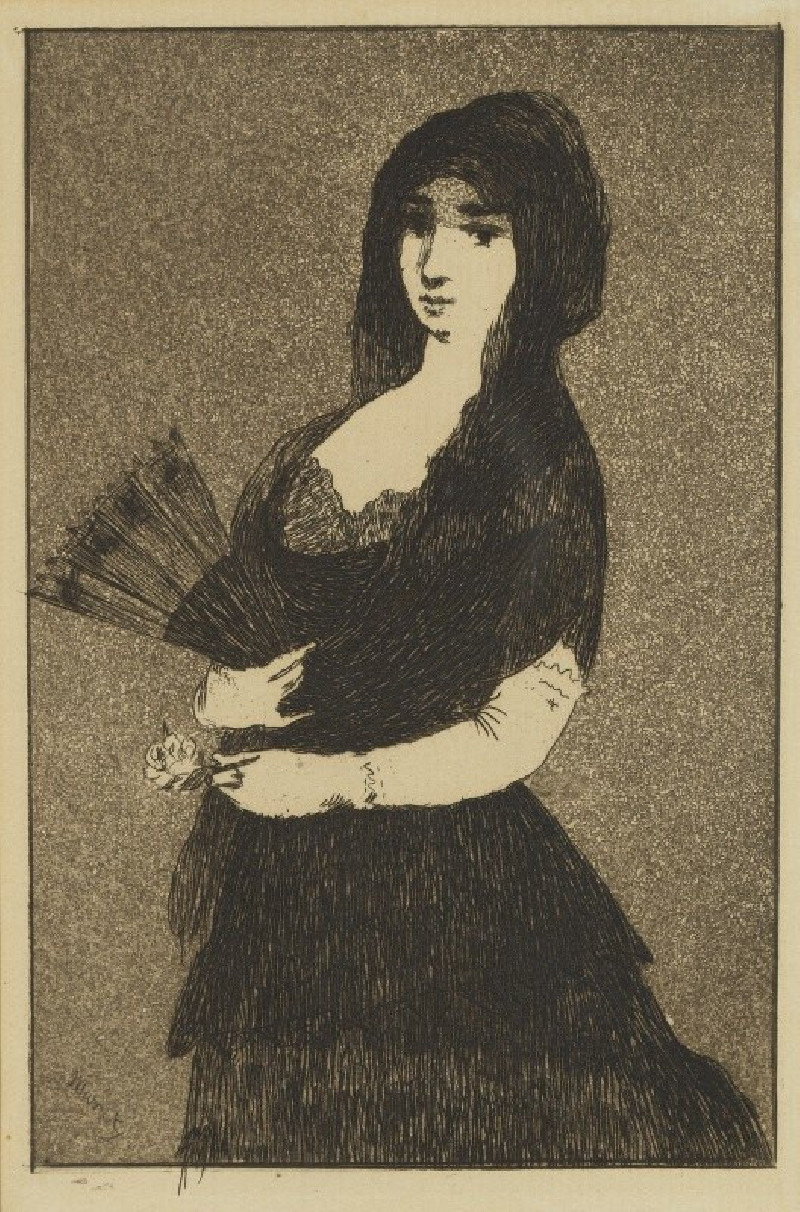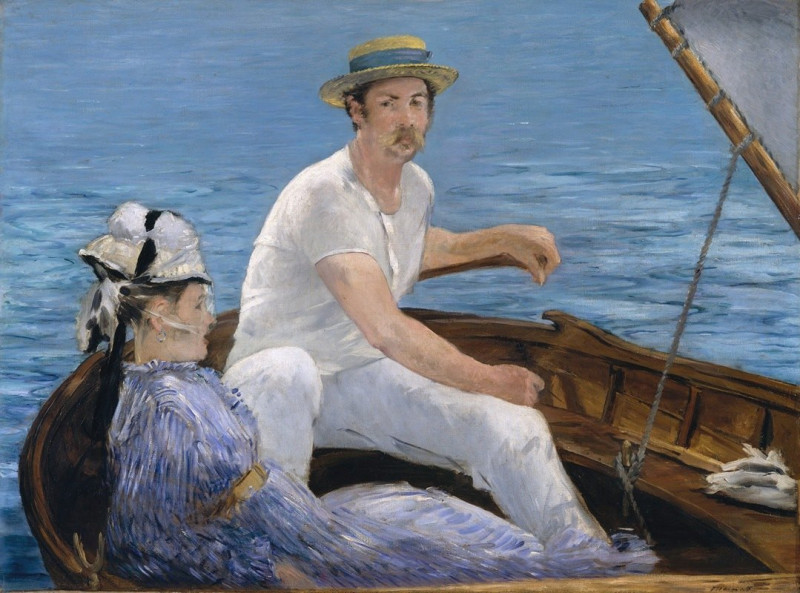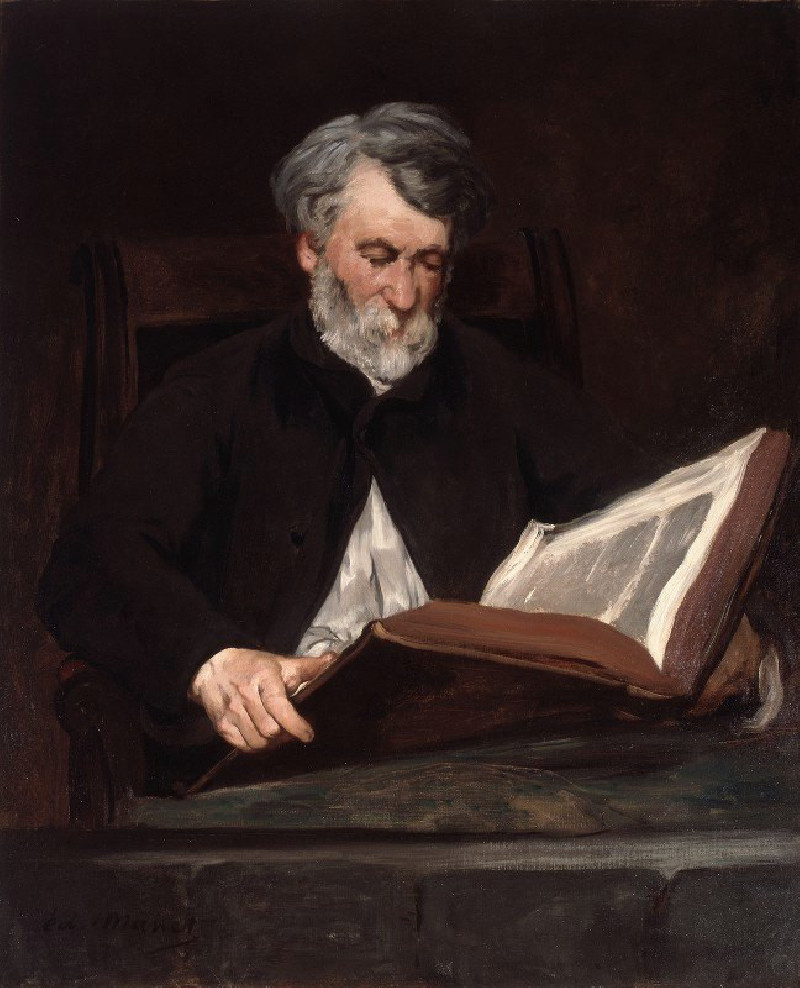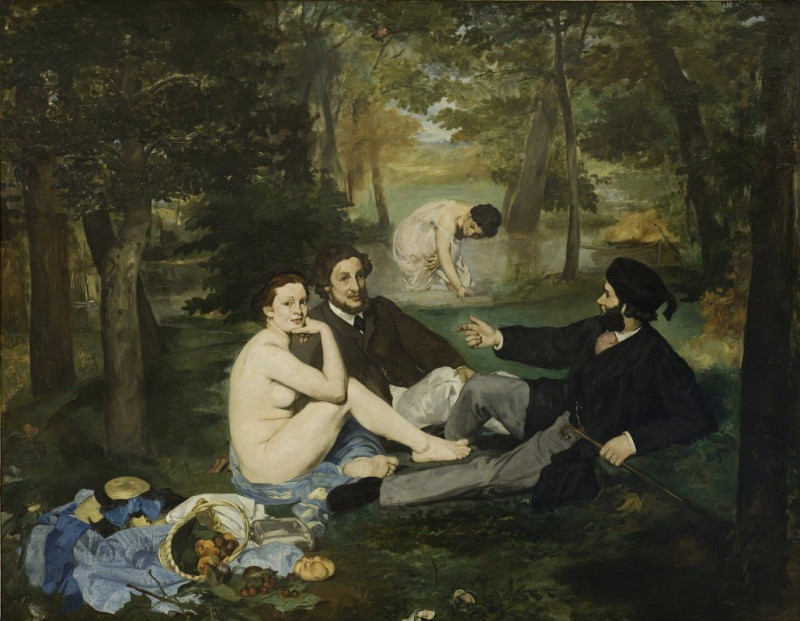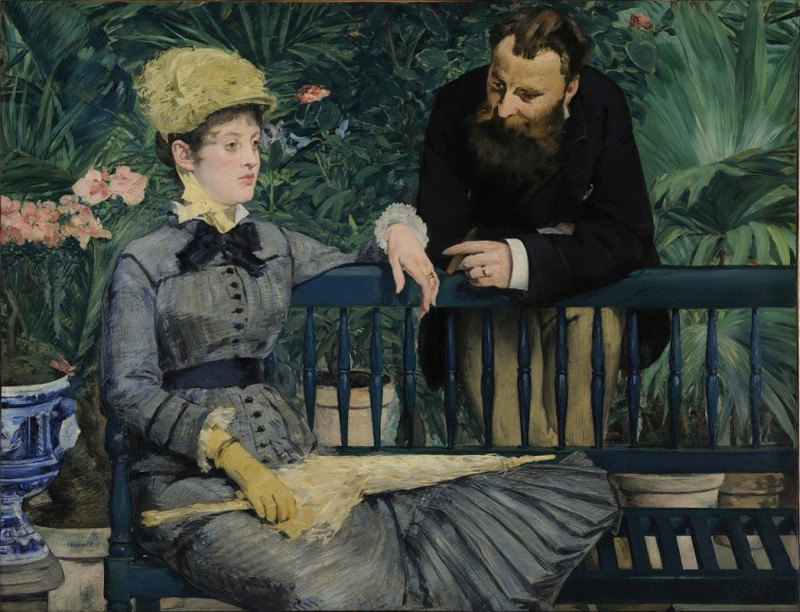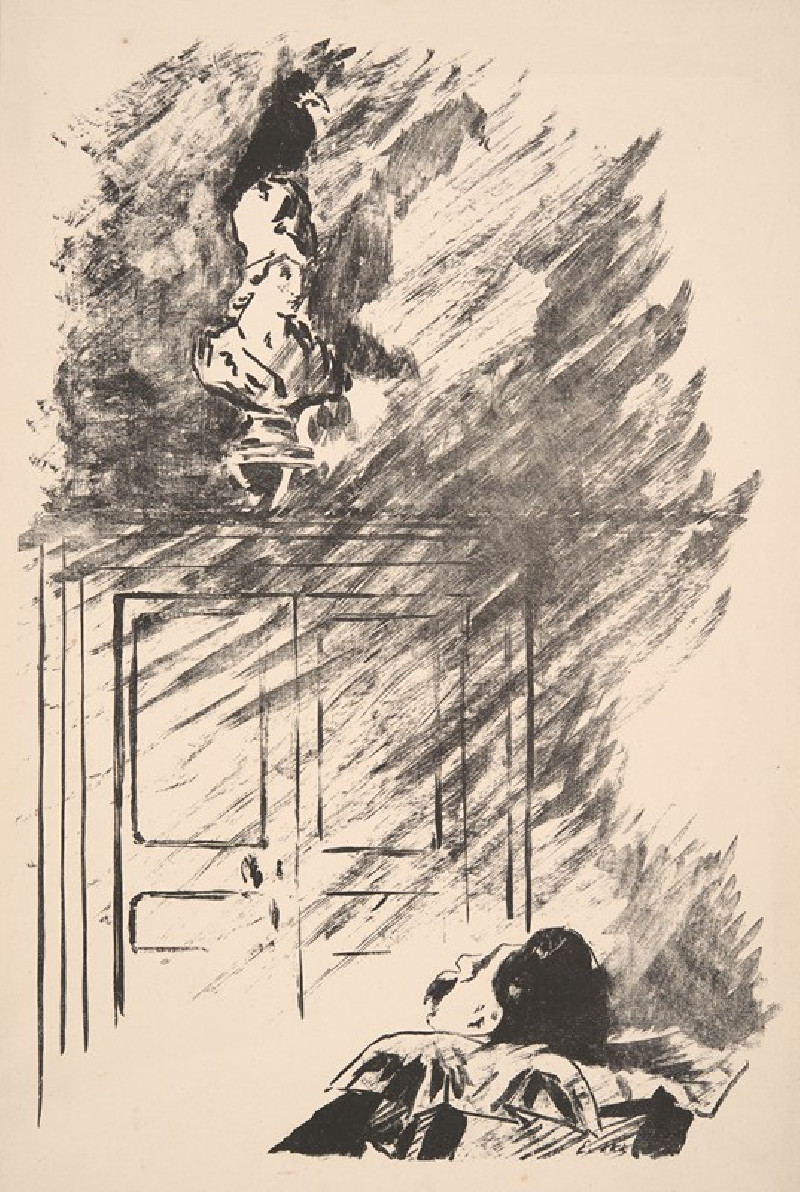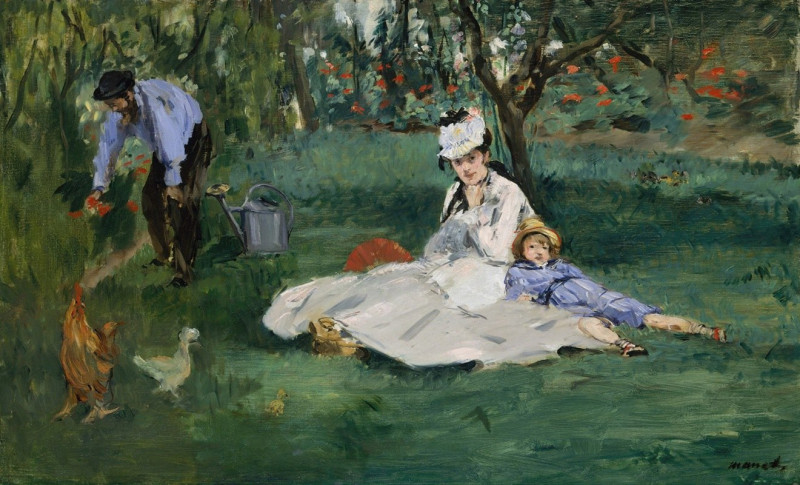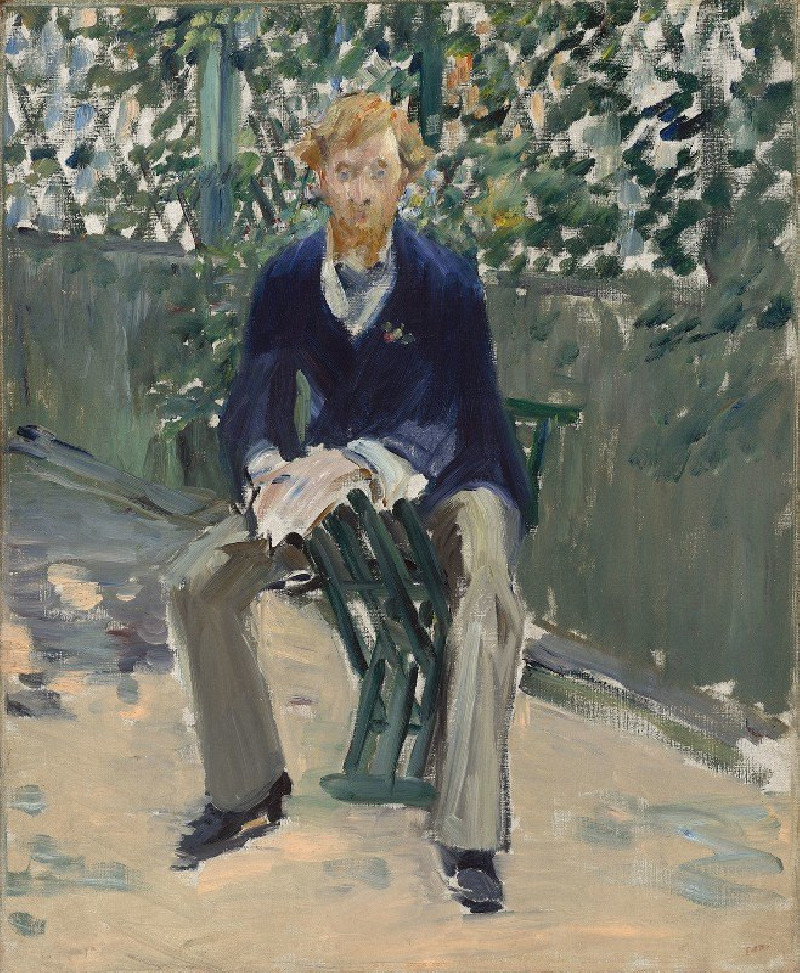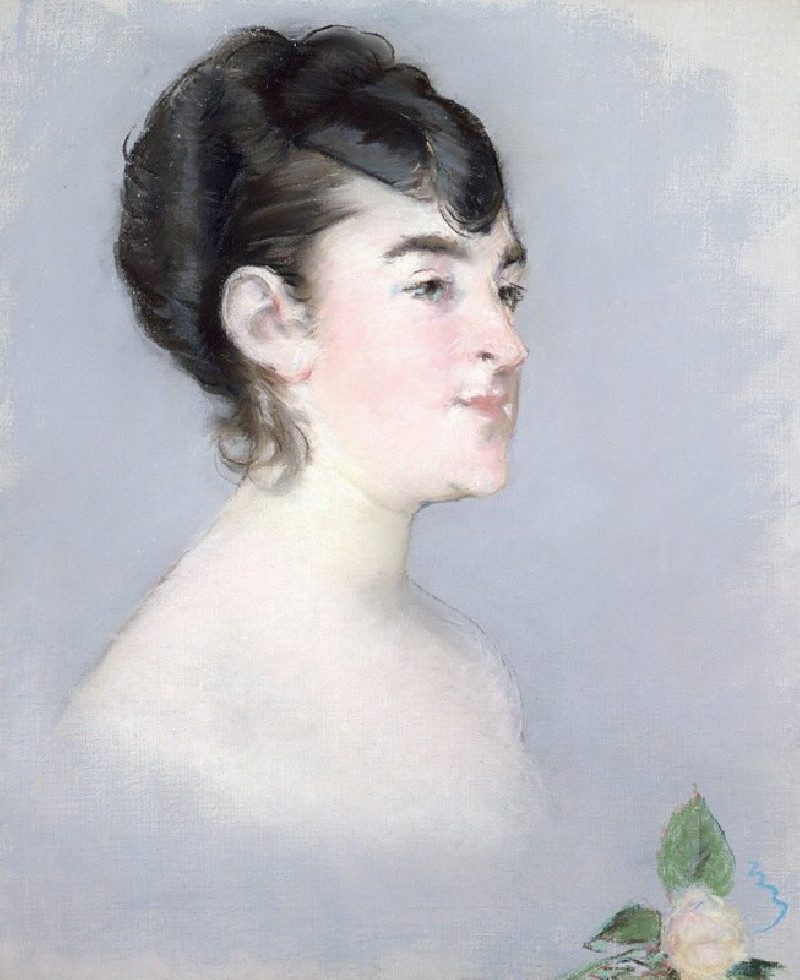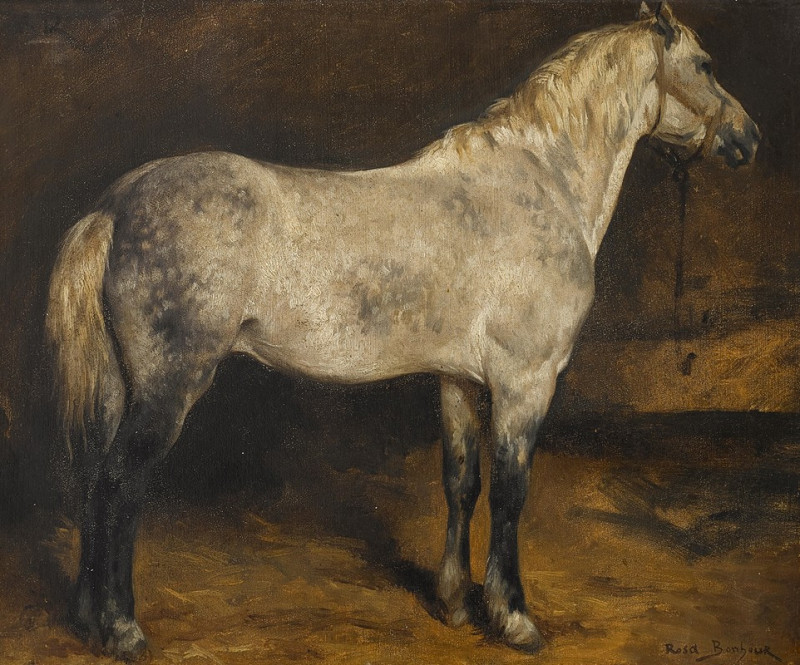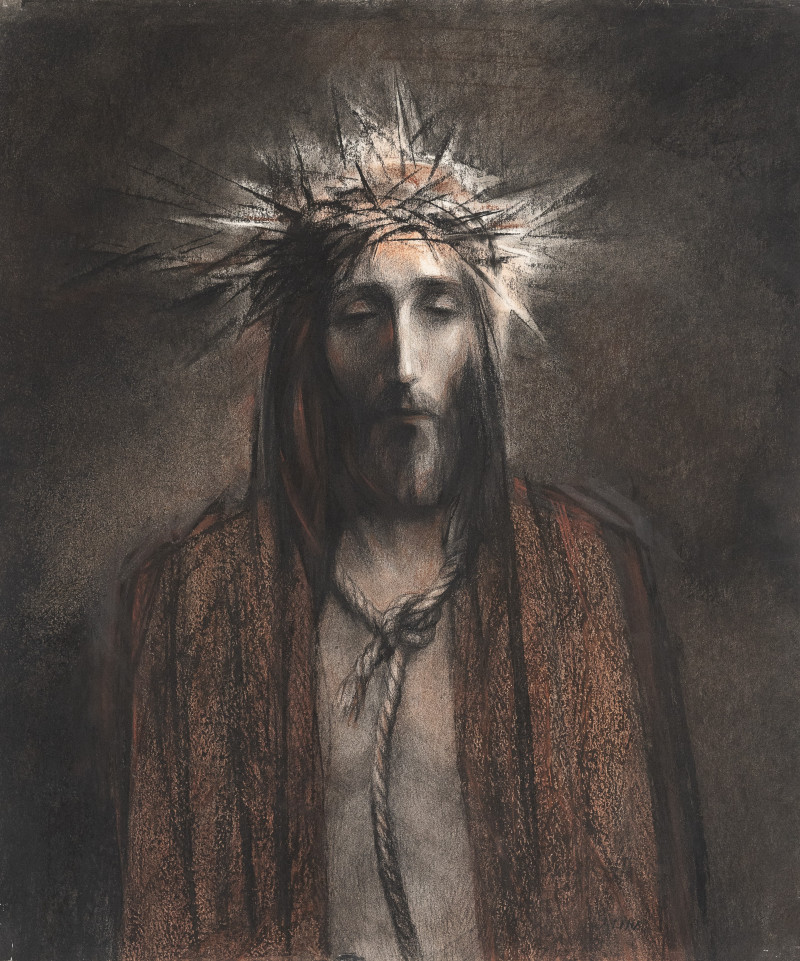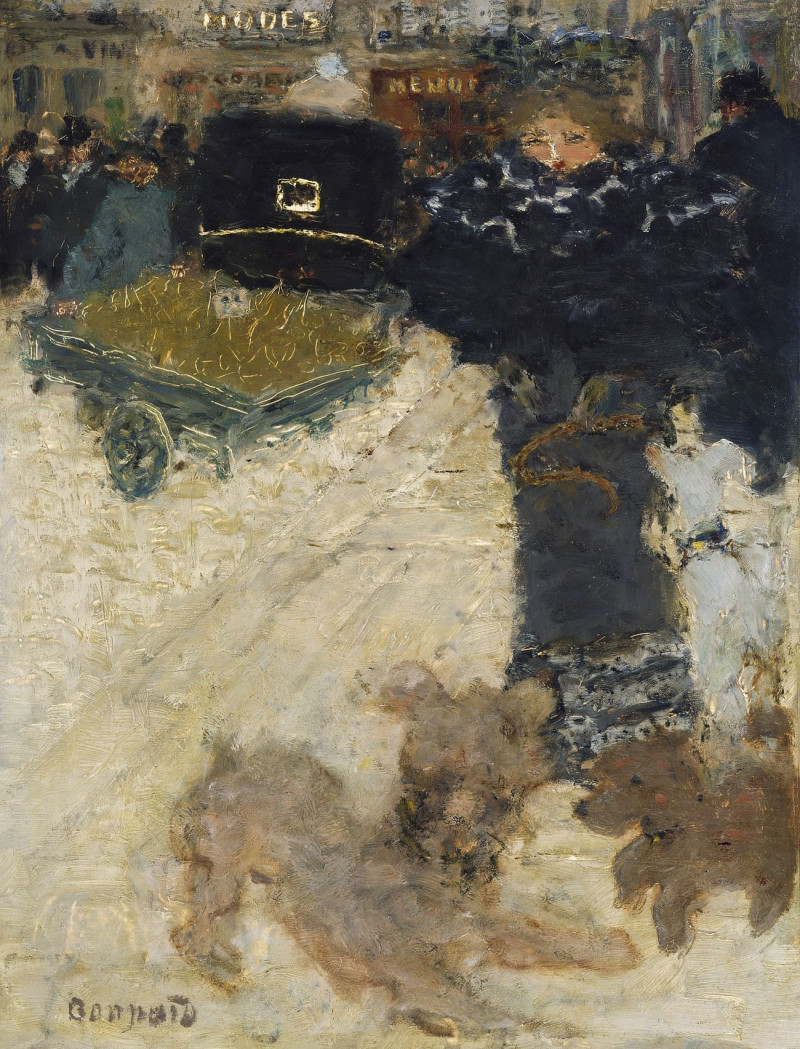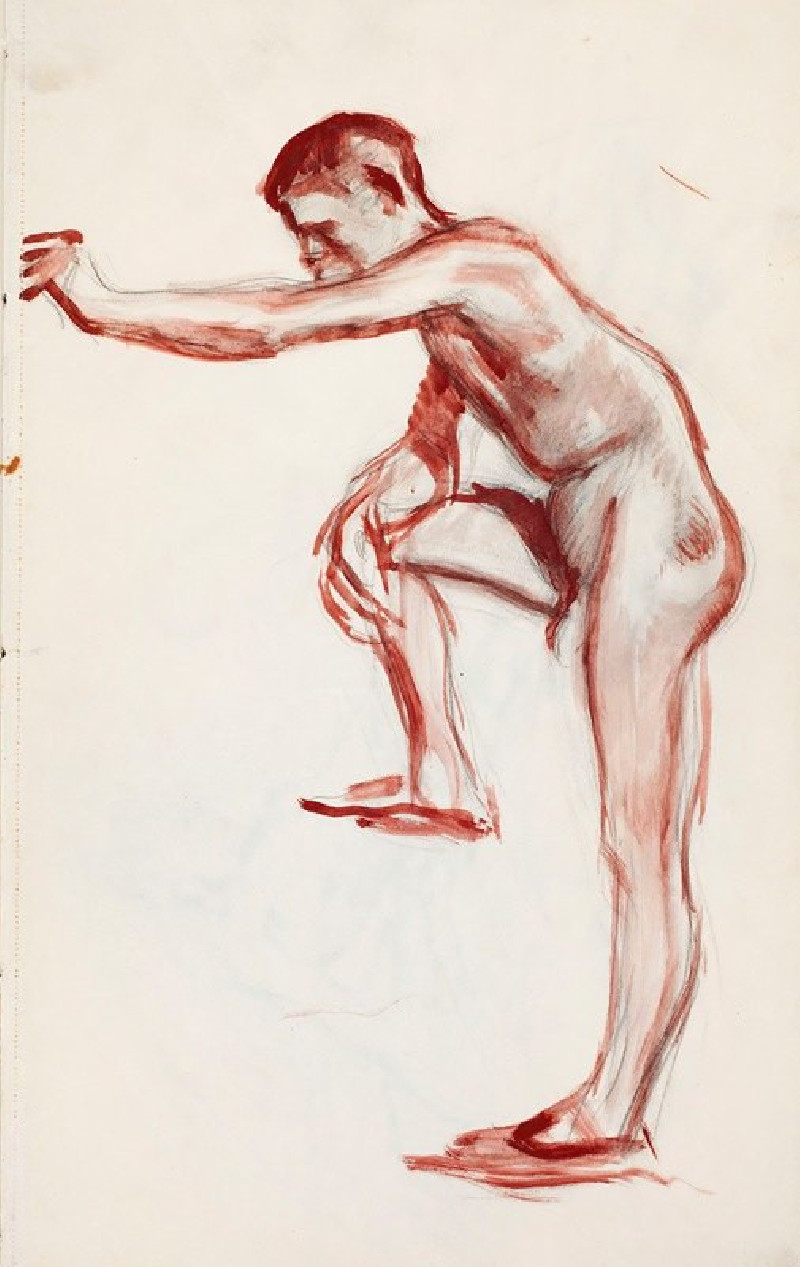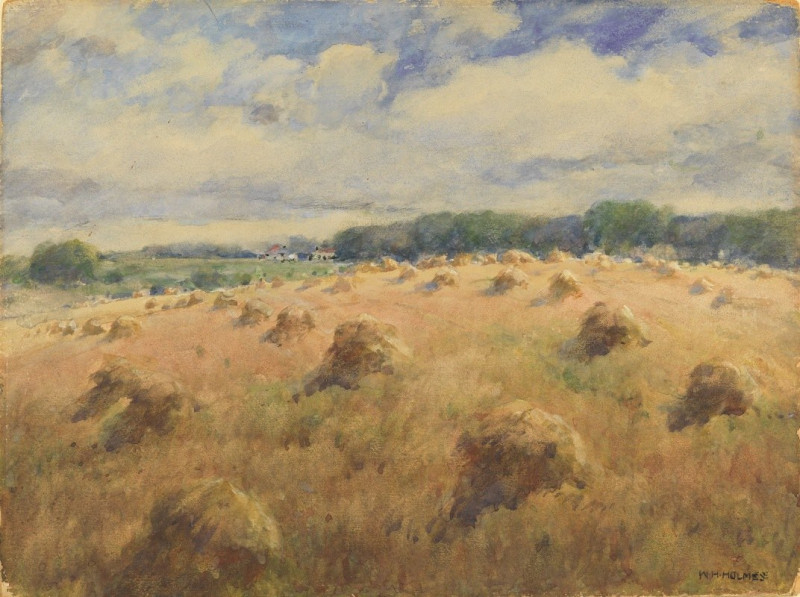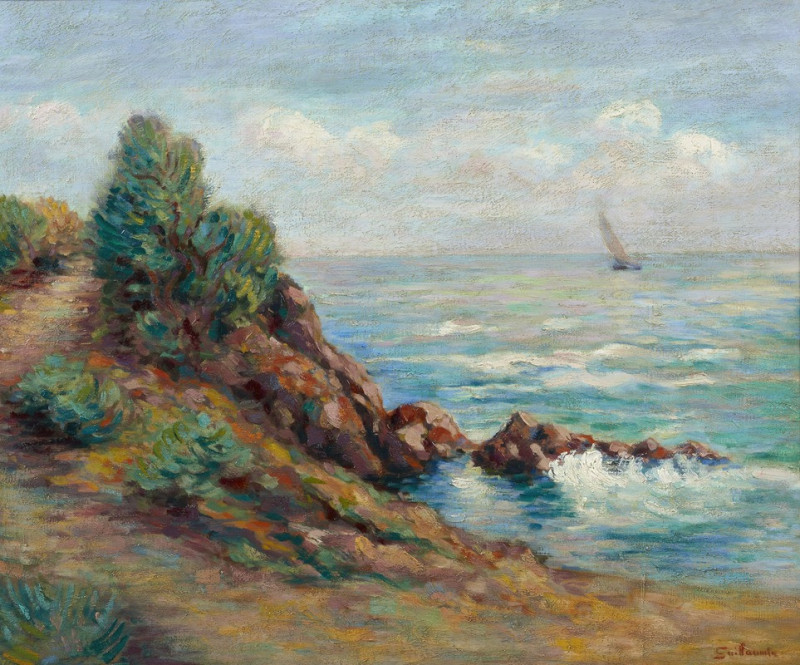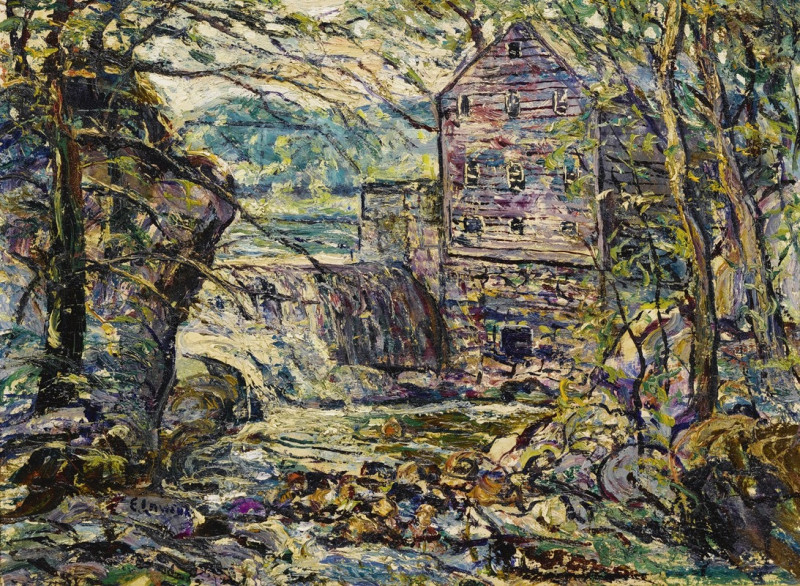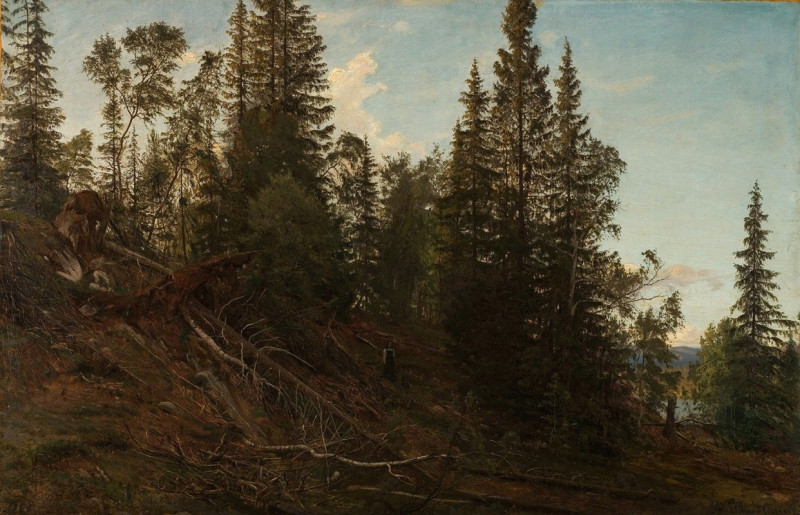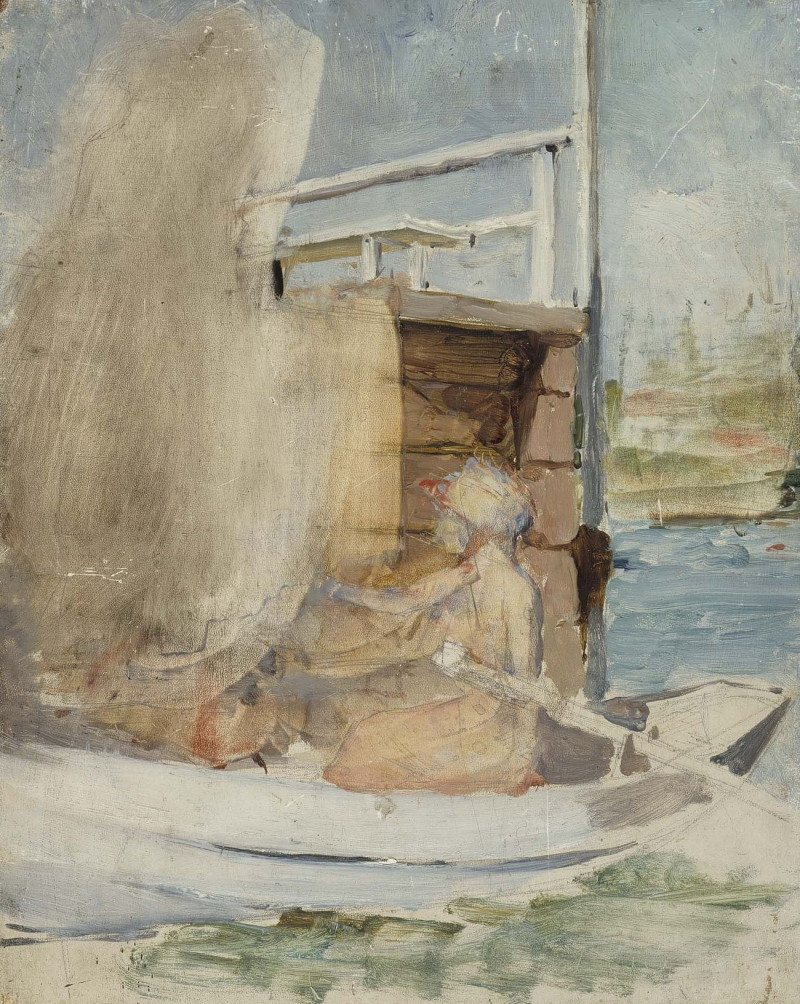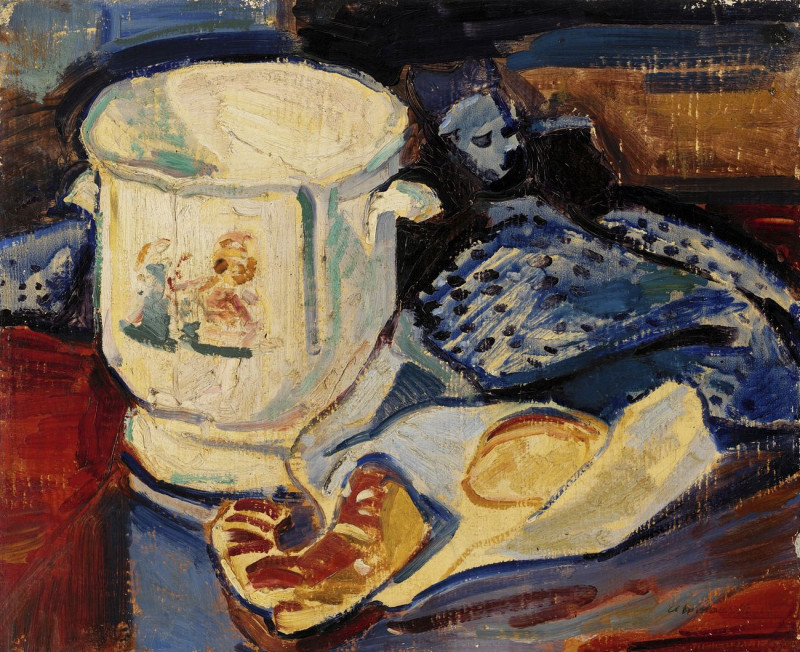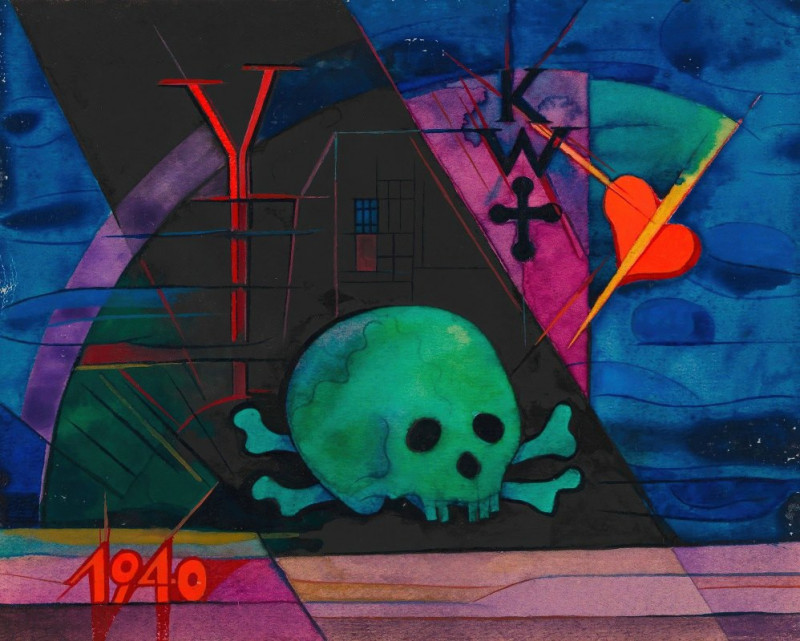A King Charles Spaniel
Technique: Giclée quality print
Recommended by our customers
More about this artwork
This painting by Édouard Manet, titled "A King Charles Spaniel," depicts a close and intimate portrait of a King Charles Spaniel dog. The dog is prominently featured at the center, seated on a rich, crimson cushion. Its coat is painted with a blend of white and warm amber tones, and the dog gazes directly out at the viewer with soulful, expressive eyes.Manet's masterful use of brushstrokes is evident in the way he captures the texture of the dog’s fur and the luxurious fabric of the cushion. The background is subdued and dark, allowing the viewer's focus to remain on the dog. A small ball lies beside the cushion, potentially indicating the dog’s playful nature or a simple element of domestic life.Overall, the painting exudes a sense of quiet dignity and the affectionate depiction typical of pet portraits. It showcases Manet’s ability to imbue everyday subjects with significant emotional depth and visual interest.
Delivery
Returns
Édouard Manet (1832–1883) was a French modernist painter and one of the first 19th century artists to paint modern life. His impressionist style is characterized by relatively small and thin brushstrokes that create emphasis on light depiction. Manet was one of the key artists in the transition from realism to impressionism, along with Claude Monet, Edgar Degas, and Pierre-Auguste Renoir. However, he resisted involvement in any one specific style of painting, and only presented his work to the Salon of Paris instead of impressionist exhibitions. His early masterworks, The Luncheon on the Grass and Olympia, created great controversy and served as a rallying point for other young painters.


